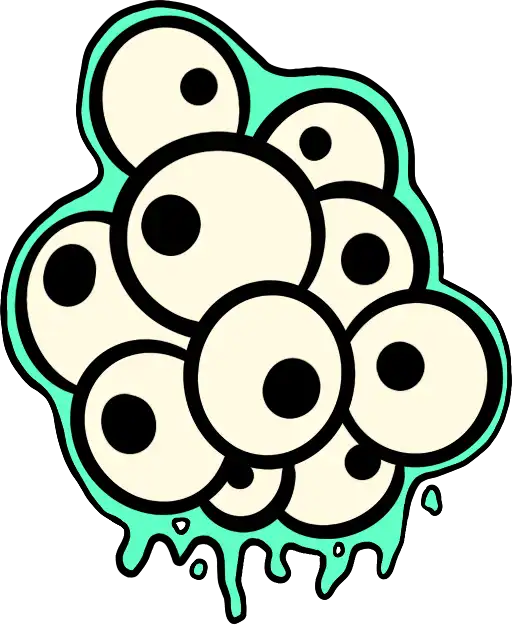
A frog’s life cycle is fascinating, especially for kids. For this reason, I’ve created a free set of activities to help you teach your kid(s) about metamorphosis.
The beginning of this page will help you explain each stage of a frog’s life cycle to your children. You know, in case you don’t remember all the details.
Directly following that are the free, printable activities. There are coloring pages, worksheets, a card set, and a cut-out activity. After that, I will show you some products I personally tested and used for teaching my kids about the life cycle of a frog.
Table of Contents
A frog goes through four main stages during its life. In fact, it’s really just three. But for the sake of understanding metamorphosis, let’s say there are four.
Continue reading for more information on each stage.

Frogs begin life in a clutch of eggs. Frog eggs are also known as frogspawn. A jelly-like substance coats the clump of eggs.
Most frogs lay eggs in a body of water like a pond, lake, stream, or puddle. Some types of frogs, like tree frogs, lay eggs on the underside of leaves, directly above the water. As the tadpoles hatch from the eggs, they fall into the water.
Some frogs can lay over 20,000 eggs in a year. A frog egg looks like a jelly ball with a black dot in the middle. As the larvae grow, they begin looking like tadpoles, and they hatch from the egg.
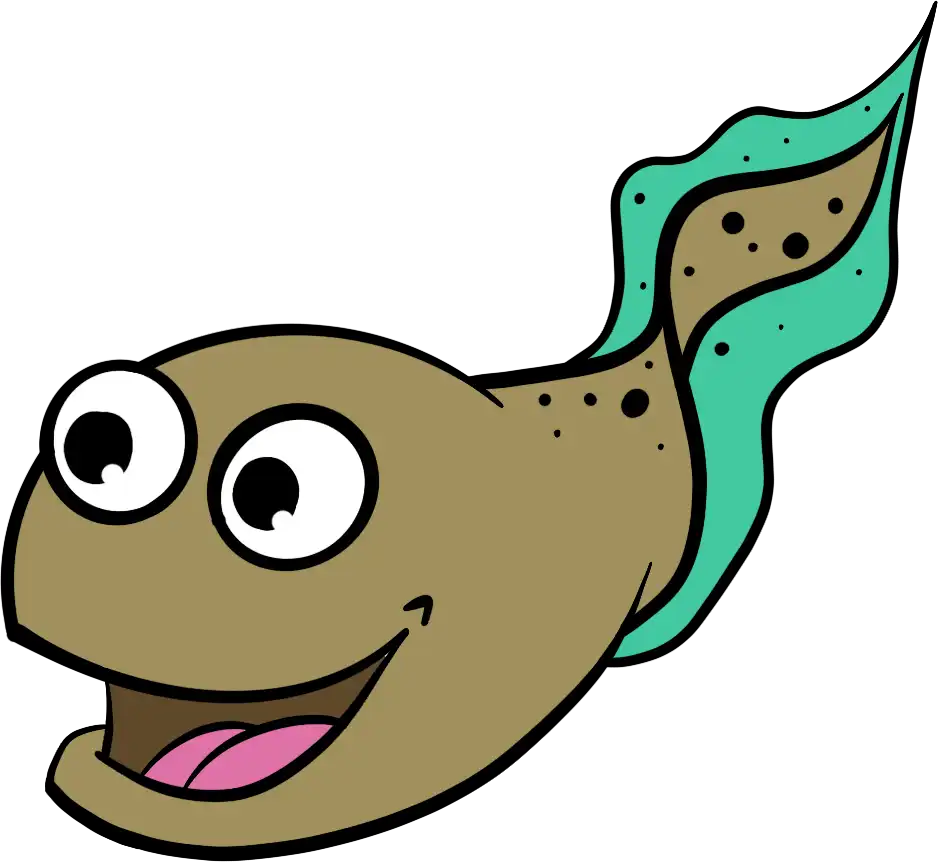
The eggs eventually hatch, and small tadpoles emerge. Tadpoles are also known as frog larvae and polliwogs. Some of them remain motionless for several days after they hatch. This is normal.
Tadpoles spend most of their time eating. In fact, researchers discovered tadpoles don’t have much of an “on/off” switch when it comes to eating [1] . It’s for good a reason, too. You see, tadpoles are more likely to survive by reaching metamorphosis as fast as possible.
Metamorphosis begins only when the tadpole has enough energy stored to start the transformation. They store energy by eating as much as possible!
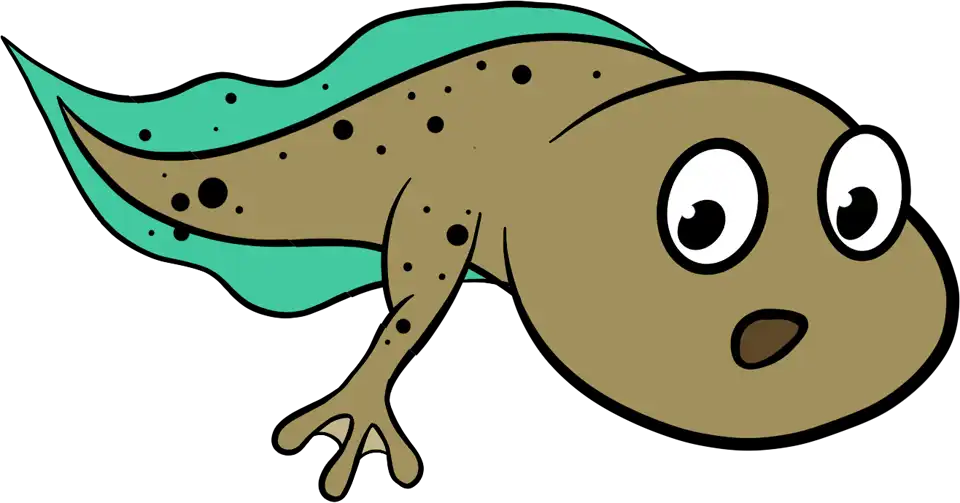
Back legs are the first to grow. At this point, the young frog is going through metamorphosis.
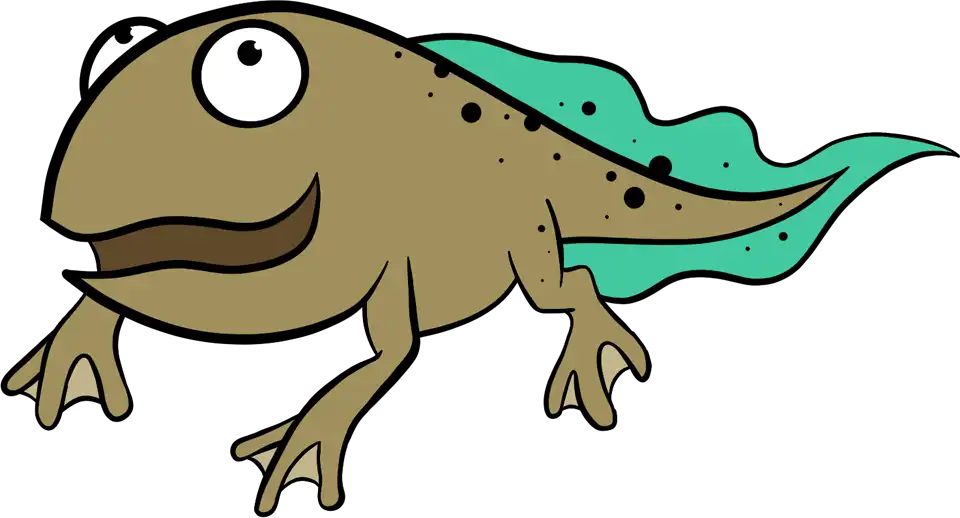
Shortly after, the front legs grow. The young frog is progressing through metamorphosis.
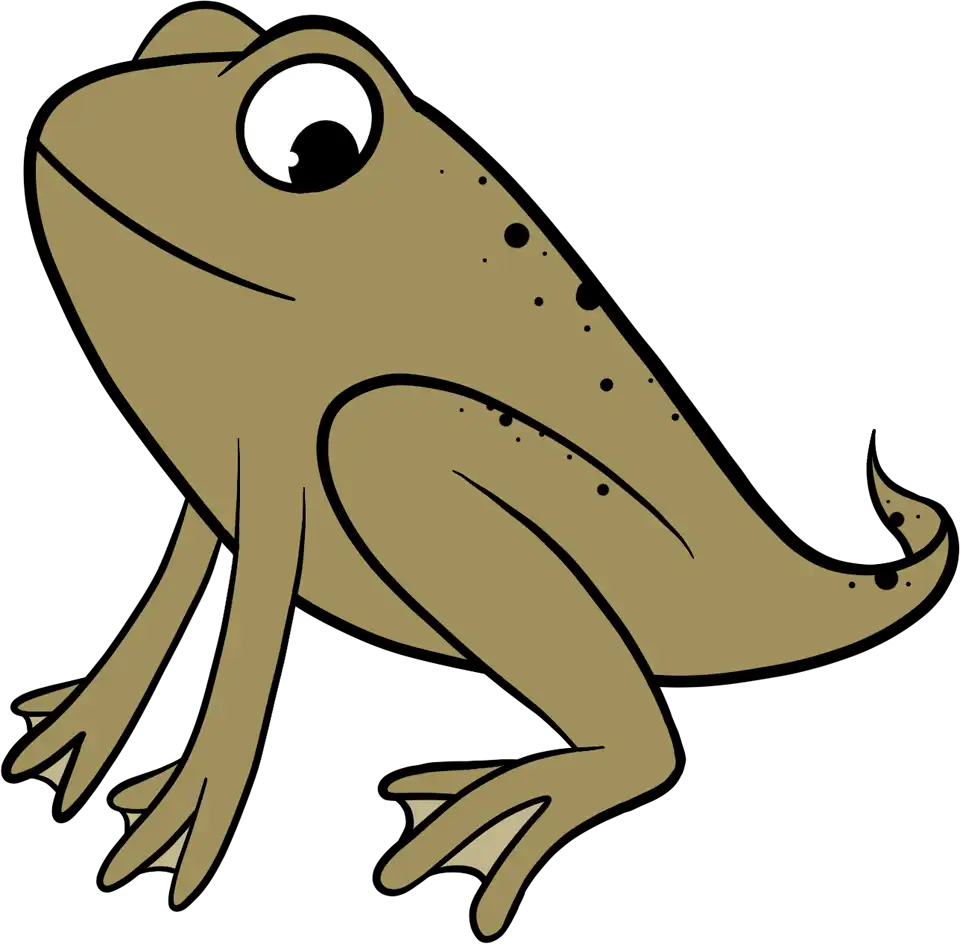
“Froglet” is a word used to describe a juvenile frog in the last part of metamorphosis. They’re capable of walking on land, and their tail is in the process of resorption.
The resorption of their tail provides a source of nourishment during difficult parts of metamorphosis [2] . Froglets sometimes stop eating until their tail is completely gone.
This is an awkward stage for frogs because, while they have four legs and they’re capable of walking, their tail keeps them from jumping properly. Still, the transformation from a tadpole is nearly complete.
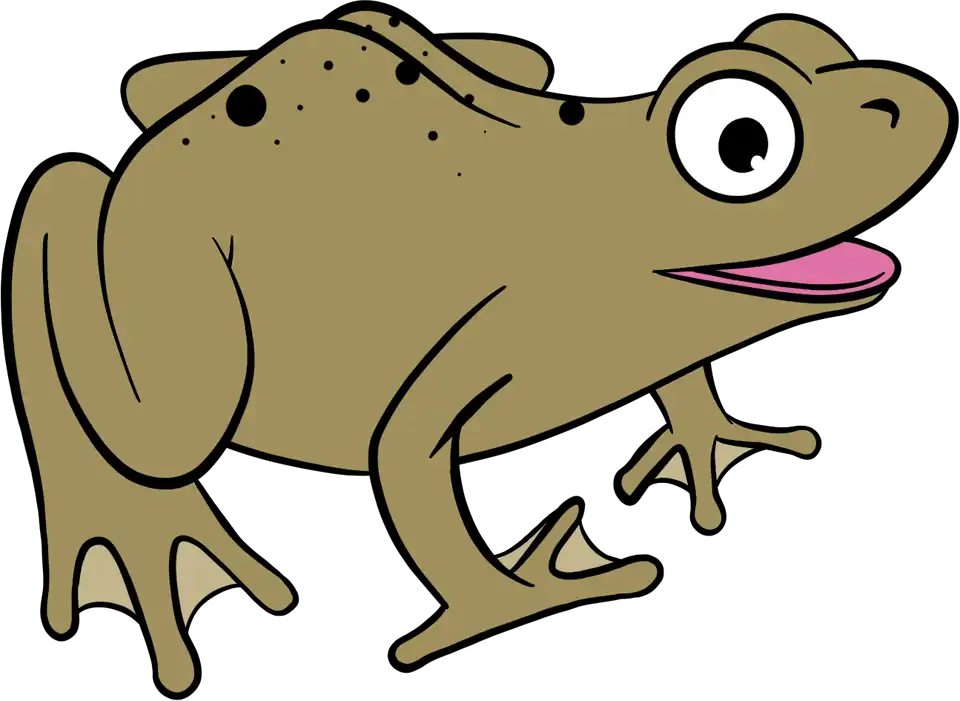
Finally, metamorphosis is complete and this slimy hopper is considered a frog. It takes a few years for the frog to completely mature [3] .
Adult frogs eat bugs and creepy crawlies like crickets, spiders, worms, wasps, bees, and flies. They rarely eat plant matter as tadpoles do.
Once the frog is mature, the cycle repeats. The mating season occurs during the springtime or rainy season.
To better teach kids about the life cycle of a frog, I’ve created some free, printable activities; worksheets, a crafting activity, card sets, and coloring pages.
To learn more about each, and to download them for free, continue reading below.
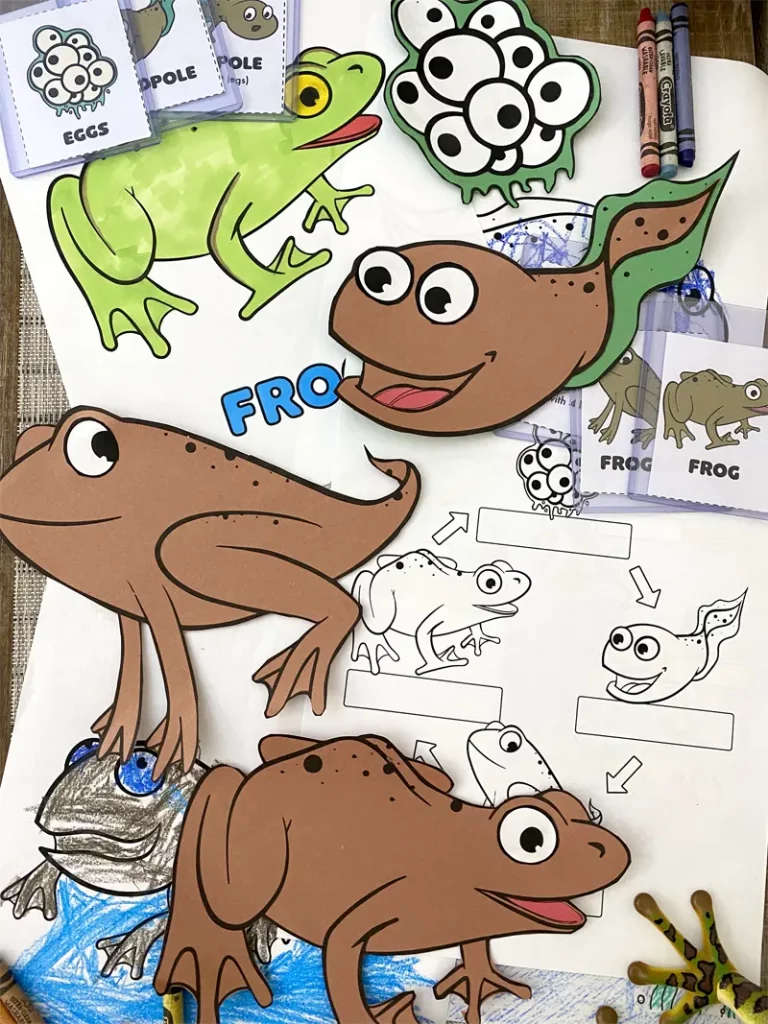
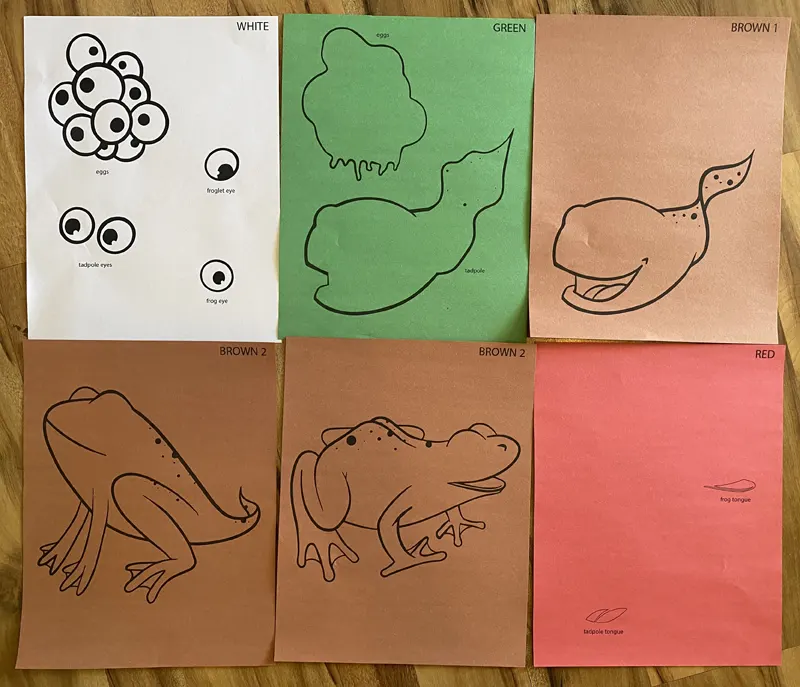
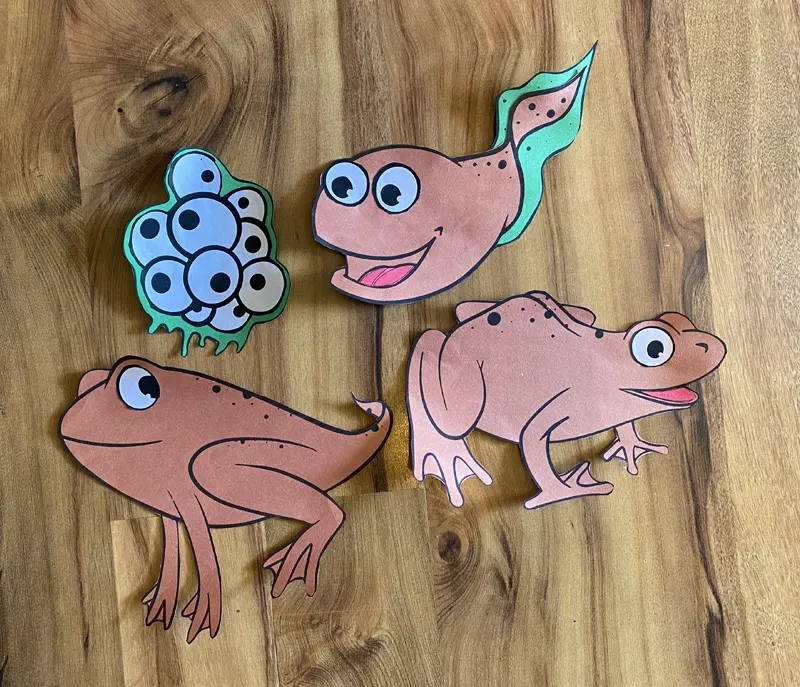
My personal favorite is this craft activity set. It’s a four-layer cut-out using sheets of construction paper.
First, you print the green layer on a piece of green construction paper. Next is the brown layer, followed by white and red. The red (or pink) layer is small and optional.
Simply cut out each layer and glue them together in order to make the eggs, tadpole, froglet, and a frog. For this activity, you will need a printer with black ink, colored construction paper, scissors, and glue.
The printing part can be confusing, admittedly, because you’re printing transparent PNG images with black outlines. Don’t worry, I included instructions.
These worksheets are suitable for varying age groups. For pre-k students, use the worksheet with cutout pictures. For kids that can read, try using the worksheets with words. Older kids can spell the corresponding words in the blank boxes.
The worksheets are mostly self-explanatory. Use the blank box to write the name of each stage (eggs, tadpole, froglet, frog).
The two on the bottom have a thin line dividing the top from the bottom. Cut the bottom piece off using scissors. From there, cut out each object and glue it to the blank boxes at the top part of the worksheet.
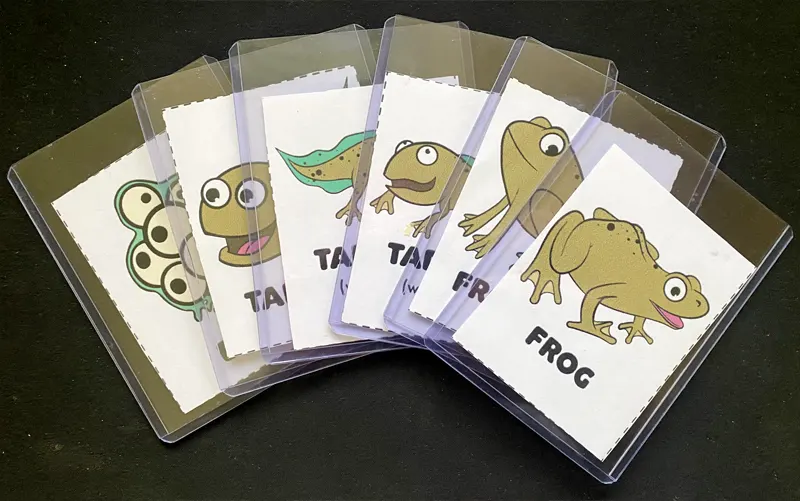
The card set can be a useful teaching tool. It’s simple, too. With a single sheet of printer paper, some ink, and scissors, you can have a set of “trading cards.”
If you want to go the extra mile, put them inside plastic trading card sleeves (link goes to Amazon) or laminate them.
Using the same set of graphics, I created a set of printable coloring pages. One sheet includes all stages in a frog’s life cycle, while the remaining pages are the associated graphic for each stage individually.
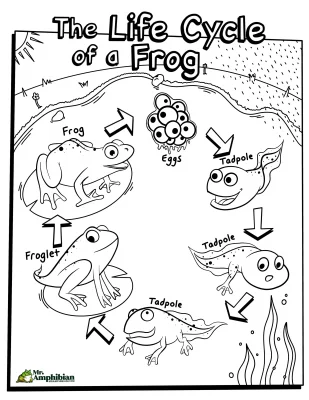
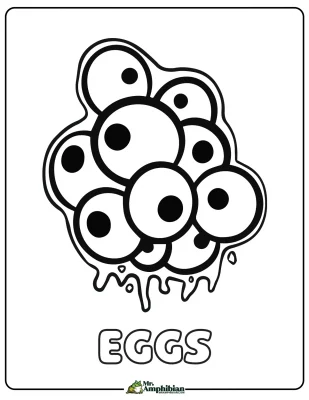
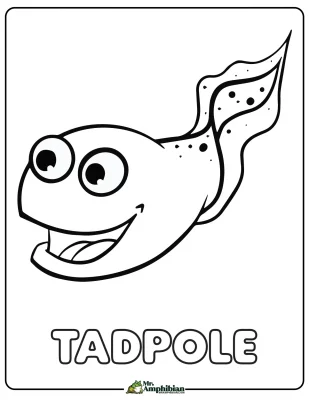
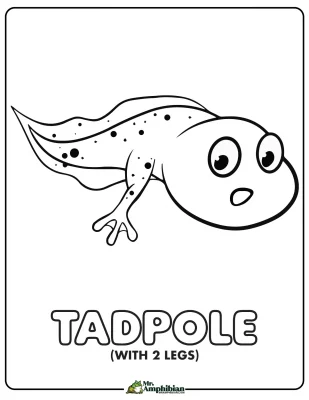
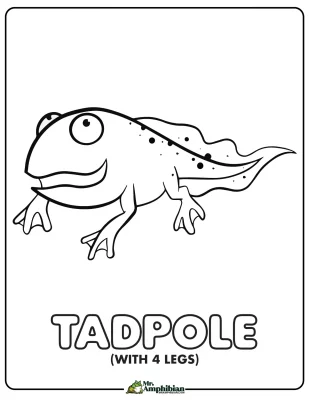
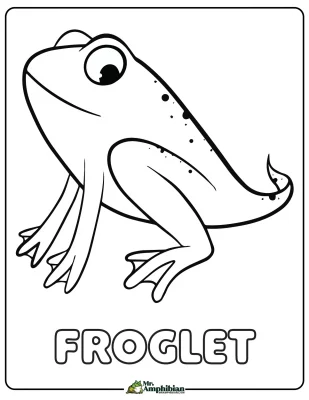
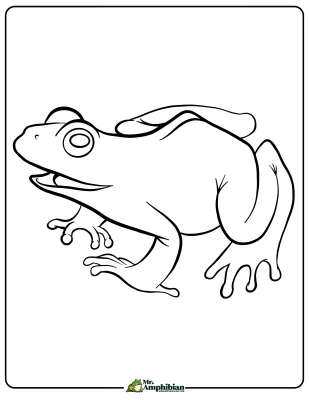
To print, click the image you want to print. It will open in a new tab. From there, go to file > print. A print dialog will open. Adjust the settings to scale the image so only one piece of paper is used for each coloring page.
By the way, you can find these coloring sheets and more by visiting the frog coloring pages section.
The following products are cheap items I found on Amazon. They’re fun, effective ways to help teach your kids. I personally tested both items and feel comfortable recommending them to you!
Having said that, I will say that my boys had more fun with the craft activity and trading cards than either one of the items below. Finally, out of the two items, my kids like the model set the most.
The five-piece frog life cycle toy set is great for kids. I bought them specifically to showcase here, to give you more ideas aside from the activity set.
Moreover, I bought them to see them for myself and see if my own kids liked them. At the time of writing this, my boys are three and five years old, and they love reptiles and amphibians.
I assumed they would like these and I was right. My three-year-old played with them the most while my five-year-old preferred the trading cards (shown above).
The toys themselves are of decent quality. The details aren’t over the top but it’s what you would expect for a cheap Amazon buy. The best part is that you can provide a hands-on approach to teaching your kids about each stage in the life cycle.
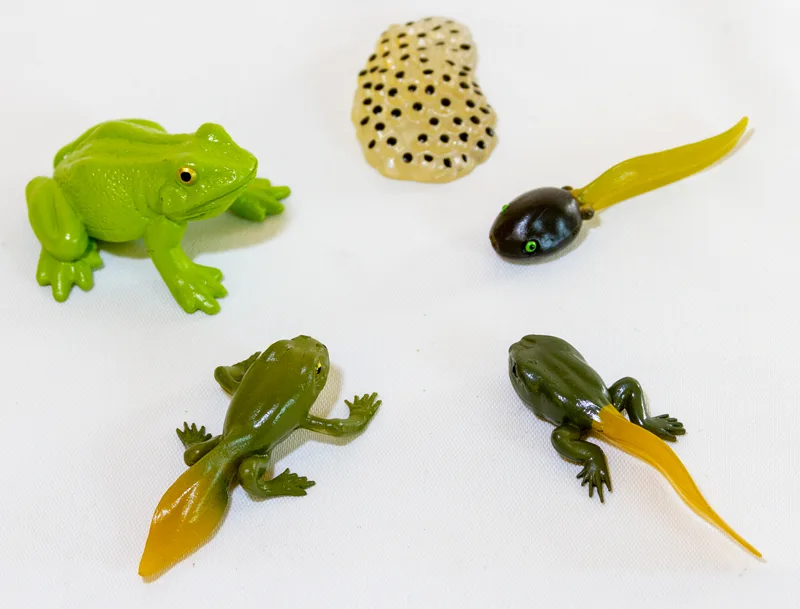
This five-layer wooden puzzle is really neat. It’s actually four puzzles in one.
The very bottom layer is a picture of the first stage – eggs in the water. The first puzzle has tadpoles without legs. After that is another puzzle of tadpoles with two legs followed by the third puzzle of a tadpole with four legs. Finally, the last puzzle has a full-grown, adult frog.
It appears to be made from a type of smooth plywood. The colors are bright and none of the puzzles are too difficult.
The first puzzle has four pieces, the second has six pieces, the third has nine pieces, and the last puzzle has twelve pieces.
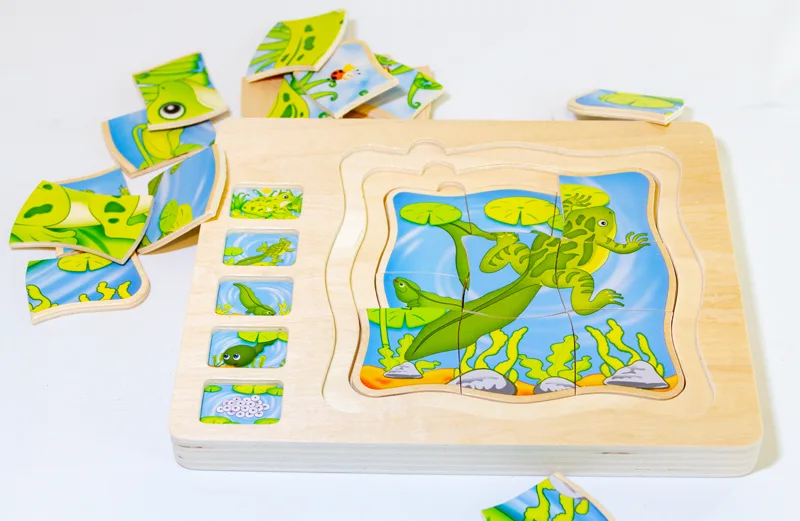
Website Links